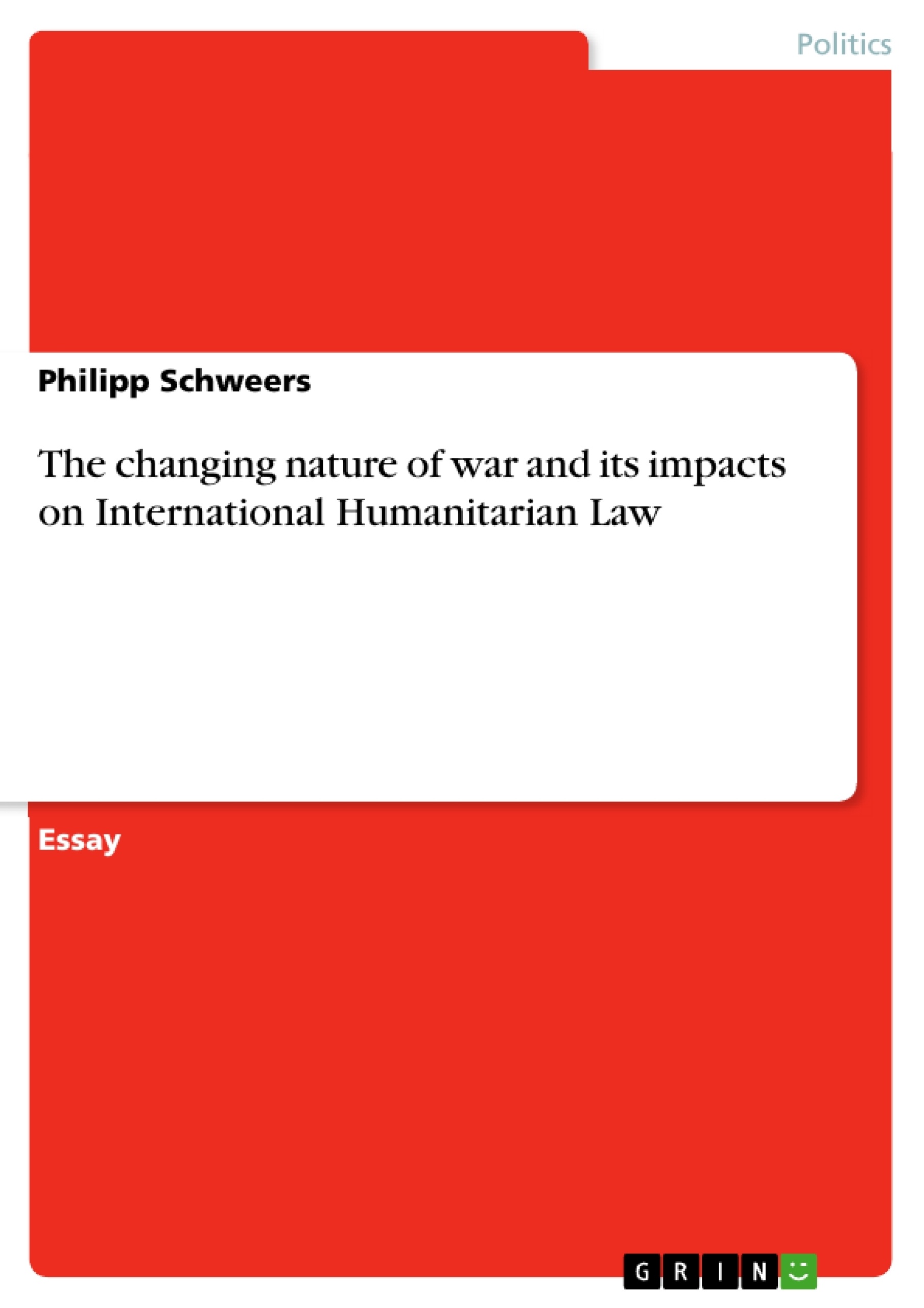At the beginning of the 21st century it seems that warfare and armed conflict get messier and more chaotic than ever before. The phenomenon of weak and fragile statehood destabilizes whole regions and makes intra-state conflict to a constant feature with spill-over character in many areas of the world. At the same time do non-state armed actors, from warlords to armed militias to terrorists to private military firms, re-enter the international conflictscene. The globalized character of contemporary organized violence, especially the phenomenon of transnational terrorism, does challenge the international security structure. While symmetric inter-state conflicts are constantly decreasing and less likely to appear, the dominant form of contemporary armed conflict is intra-state and asymmetric by nature. One of the most striking features within contemporary armed violence is the increasingly important role of civilians, as victims but also as perpetrators and participants in hostilities. The fundamental line between soldiers and civilians has long been essential to the law of war, but with the rise of transnational terrorism, warlords and other non-state actors in armed conflict this distinction gets seemingly blurred.
Inhaltsverzeichnis (Table of Contents)
- Introduction
- The distinction between civilians and combatants in international humanitarian law (IHL)
Zielsetzung und Themenschwerpunkte (Objectives and Key Themes)
This paper examines the concept of distinction between civilians and combatants, the contemporary challenges to it and tries to discuss the possible need of legal adaption in times of a changing nature of war.
- The blurring lines between civilians and combatants in modern warfare
- The impact of non-state actors and transnational terrorism on the distinction principle
- The evolving nature of war and its implications for international humanitarian law
- The need for legal adaptation in light of contemporary armed conflict dynamics
- The evolving roles of civilians in armed conflict
Zusammenfassung der Kapitel (Chapter Summaries)
- Introduction: This chapter establishes the context for the paper, highlighting the increasing role of civilians in armed conflict and the growing complexity of distinguishing between civilians and combatants. It cites statistics on civilian casualties and the challenges posed by non-state actors and transnational terrorism.
- The distinction between civilians and combatants in international humanitarian law (IHL): This chapter explores the historical development of the distinction principle in international humanitarian law, tracing its roots back to the nation-state's monopoly on violence and the codification of laws of war. It discusses the significance of the distinction principle and its role in protecting civilians.
Schlüsselwörter (Keywords)
This paper examines the concept of distinction between civilians and combatants, the contemporary challenges to it and tries to discuss the possible need of legal adaption in times of a changing nature of war. Key terms include: distinction, civilians, combatants, international humanitarian law, non-state actors, transnational terrorism, armed conflict, legal adaptation.
- Citation du texte
- Philipp Schweers (Auteur), 2009, The changing nature of war and its impacts on International Humanitarian Law, Munich, GRIN Verlag, https://www.grin.com/document/129267



